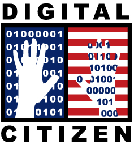- Link a set of content standards with the model school library standards in light of digital citizenship.
- Brainstorm learning activities that could incorporate both sets of standards.
Standards seem to be the driving force for curriculum and instruction these days, which can be an advantage because standards help codify what students should be able to know and do. Furthermore, a set of standards theoretically provide an articulated cognitive road map for learning that can be optimized through collaboration and other cross-curricular efforts.
Although the term digital citizenship is recent, several of the concepts are well established, such as intellectual property, manners, and critical thinking. Therefore, the ideas behind digital citizenship are frequently found in existing content standards. Fortunately, the model school library standards are a new product, so they explicitly address digital citizenship issues. Nevertheless, many intersections of knowledge, skills and dispositions exist between other academic standards and library standards. The commonalities provide rich opportunities to collaborate and design meaningful learning activities that incorporate digital citizenship naturally.
Discovery Exercises:
1. Choose one set of academic content standards, which are found on the For Teachers page. The standards have been highlighted to show digital citizenship concepts. Yellow highlights show direct connections to digital citizenship (close transfer of learning), and green highlights show indirect connections (more general transfer of learning). It’s a good idea to skim the highlights for all grades to get an idea of the developmental articulation.
2. Next, examine the model school library standards, or focus on just the digital citizen list, both of which are found in the For Librarians page. You will notice that there are four major standards. See how the digital citizenship standards are distributed over the four categories. What intellectual picture does that paint?
3. Now take one grade for both sets of standards, and link them. This process forms the basis of developing learning activities that can foster digital citizenship while covering essential academic concepts.
4. You might disagree with the highlights, which is fine. They represent a small group of people’s perspective. The main goal is for you to agree with your teaching partners as to the appropriate content to address.
5. At this point, some ideas for lessons or learning activities may emerge. Be sure to jot them down, hopefully in your blog. You can also add comments to the standards, customizing them as a tool for designing instruction.
